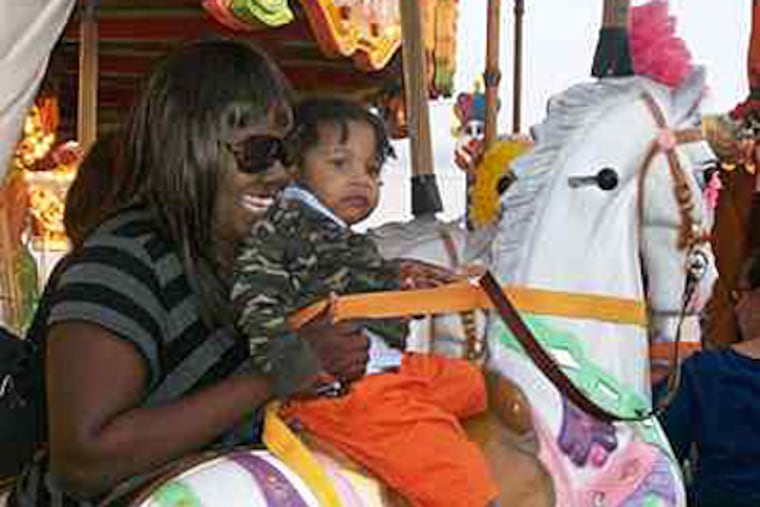Major new study to seek answers on autism
Philadelphia is one of four sites nationwide that will follow mothers and children through key stages of development.

In a bid to unravel the confounding mysteries of autism, researchers yesterday launched a comprehensive study to track families with an autistic child through another pregnancy, birth, and the following three years.
Hundreds of environmental factors - from diet to infection, pesticides and medications - will be examined for possible interplay with genetic makeup. Perhaps 100 children with autistic spectrum disorder will be born, researchers said, to the 1,200 women they hope to enroll at four study sites nationwide, including Philadelphia.
"These families know there is susceptibility, because they already have an affected child," said principal investigator Craig J. Newschaffer, a professor at the Drexel University School of Public Health, during a teleconference with reporters yesterday.
About one out of every 150 children is diagnosed with autism spectrum disorder, a group of neurological disorders that cause delays in language development and impairment in the ability to relate to others.
For siblings of children with autism, the risk may be 10 times greater - one reason that genetics is believed to play a large role.
While diagnoses have increased dramatically in recent decades, it is unclear how much of that is due to increased public awareness and better testing. The specific causes of autism are unknown.
Some parents believe that childhood vaccinations, which also have increased in recent years, could be a trigger. Medical research has found no solid basis for this idea, but vaccines are among the many environmental factors that will be examined in the new study.
The effort is unusual because "we are collecting the information in real time," said Lisa A. Croen, an epidemiologist with the Kaiser Permanente Division of Research in Northern California, which is part of the study.
So-called prospective research is considered more accurate than medical studies that enroll people after a diagnosis and ask them to look back.
Daureena Williams, 26, has two sons - a 2-year-old with autism and a 1-year-old without - and has told investigators that she wants to be part of the study if she gets pregnant again.
"I just want to know where autism comes from," she said last night from her West Philadelphia home.
Anthony Shawn Williams Jr. was born in August 2006. While something seemed wrong within weeks, at 10 months "he started talking, saying 'Mommy' and 'Daddy,' " she said. Then he had the first of two seizures, and he was later diagnosed with autism.
Although he has learned to recite the letters of his name, Williams said, he waves his fingers and arms in a pattern associated with autism, and his communication is no longer spontaneous.
"He would never say, 'Mama, juice!' " she said.
The Early Autism Risk Longitudinal Investigation (EARLI) will include "multiple encounters with mom" during pregnancy, Newschaffer said, to get blood and urine samples (for DNA and other analyses) and updates on detailed diaries the women will be asked to keep about their health and environmental exposures.
Other data will be collected from the father and from siblings who have autism spectrum disorder. Stool and other samples will be taken from the baby at delivery, followed by examinations at 6, 12, 18, 24, and 36 months.
Researchers will follow a broad range of developmental and cognitive measures to pinpoint the timing of any symptoms that might hint at developmental delays, said Rebecca Landa, director of the Kennedy Krieger Institute's Center for Autism and Related Disorders in Baltimore, which is participating in the study there along with Johns Hopkins University.
Newschaffer, an autism expert who came to Drexel from Hopkins three years ago, said researches would "combine environmental data with the genetic data, because very likely there are genetic susceptibility factors."
Besides Philadelphia and Baltimore, there are two study sites in Northern California, one of them at the University of California, Davis. The study is funded with $14 million from the National Institutes of Health and $2.5 million from Autism Speaks, an advocacy group.
The local portion of the study, which aims to enroll 300 women who are no more than 20 weeks pregnant and reside in Southeastern Pennsylvania, will be led by Drexel and by the Center for Autism Research, a collaboration between Children's Hospital of Philadelphia and the University of Pennsylvania.
Children's Hospital two months ago became the seventh center to participate in a huge national examination of how genes and the environment interact to affect children's health. The National Children's Study, which locally is limited so far to residents of Montgomery County, is expected to follow as many as 100,000 children from before birth until age 21.
That study is not specifically aimed at autism, but early findings, once they become available, could help autism researchers identify other environmental targets.
Children who develop autism in the NCS study, for example, might not have siblings with the disorder. The EARLI researchers are looking only at families that already have a diagnosed child because, among other things, finding more autism will also offer more opportunity to tease out environmental triggers.
"By studying families that have this enriched risk, there are some advantages to finding some environmental risk factors," said Newschaffer, and the findings "may be generalizable to the general population."
In addition to identifying how environmental exposures during pregnancy and early life might play a role in autism, and how they might interact with genetic factors, his study will also look for possible biological markers (measurable in blood or urine, for example) and behavioral changes that might predict development of autism spectrum disorder.